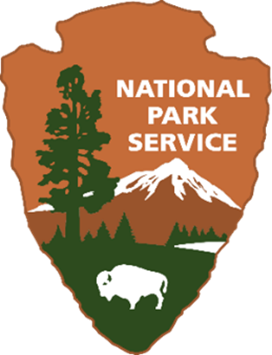May 13, 2022
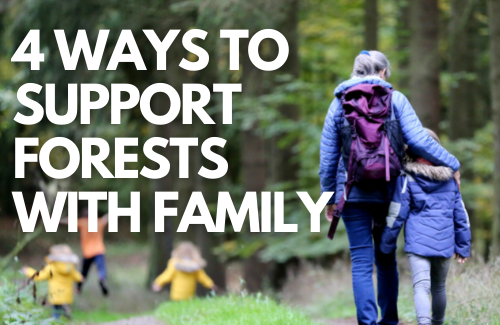 May, June, and July are notable months for the transition from spring to summer, the anticipation of breaking from school, and a few of our favorite family-focused holidays: Mother’s Day (May 8), Father’s Day (June 19), Parents’ Day (July 24).
May, June, and July are notable months for the transition from spring to summer, the anticipation of breaking from school, and a few of our favorite family-focused holidays: Mother’s Day (May 8), Father’s Day (June 19), Parents’ Day (July 24).
We also want to acknowledge the great diversity of families that exist by both blood and bond, as well as how difficult these holidays can be for families who have lost a loved one.
Strong family memories are made outside. And all children should have the opportunity to learn about and enjoy the outdoors with the grownups who love them. This summer, dedicate yourself to finding time to spend time in nature with your family—we promise it’s time well-spent.
Plus, despite what you may think, you don’t need to drive far away and buy fancy shoes or expensive accessories to visit a forest! We encourage you to make a plan and recreate responsibly, but forests may be closer than you think, even in busy urban areas!
Drop what you’re doing, grab the rest of the family, and hit up a forest! Sustainably managed forests are good for you and good for the planet.
Here are a few ideas to get you started.
1.) Take a Hike or Walk Together
More than 350 million acres (142 million hectares) of forestland throughout the United States and Canada is certified to the Sustainable Forestry Initiative’s Forest Management Standard, and a 96% of this vast area is open to the public for recreation. With all those certified acres, it’s likely there’s a great opportunity for a hike or leisurely nature walk with smaller children in a National Park or forest near you.
- Birdwatch! Bird watching with children can build respect and compassion for nature and all living things. Birding can also help kids refine their skills in concentration and observation. Head out as a family on a nature walk to a local park, forest, or nearby area and observe birds. Watch Maya the Science Kid for some helpful tips on getting started and some essentials you’ll want to have on your excursion, or read Audubon’s tips and games to encourage children to try birding.
- Use PLT’s Activity 10: Home Tweet Home from Trees & Me: Activities for Exploring Nature with Young Children to teach young children how the birds they observe on their walk depend on trees and how to look for signs of use by animals.
- Listen to birdsong and check out these STEM-focused ideas for elementary, middle, and high school students inspired by the Sounds Around activity found in Project Learning Tree’s PreK-8 Guide. A simplified version of this activity is downloadable as a free family activity (in English and Español) and watch PLT Colorado‘s Danielle Ardrey demonstrate how families can try the activity out in their own backyard to grow their STEM skills and environmental literacy.
- For younger children ages 1-6, trees are the perfect early childhood introduction to nature! Make the most of the trees and forests near you (in any setting!) by exploring nature through the five senses and four seasons. Trees & Me: Activities for Exploring Nature With Young Children includes indoor and outdoor activities and downloadable music to accompany.
- Head to a national park! Getting kids outside has many benefits beyond physical health. When spending time outdoors, kids develop respect and understanding of the natural world. With over 400 national parks and monuments to explore, national parks are a great way to inspire a love of nature in kids. Check out PLT’s Celebrating National Parks to explore the history of national parks, activities to try with children, and how to incorporate PLT curriculum to enhance learning. Plus, the Every Kid Outdoors pass allows any fourth grader (and a car full of family and friends) to enter National Parks, Forests, and many other national lands and waters for free!
- Connect children to nature through sensory experiences on your visit with the handy Seeds to Trees Pocket Guide. Designed for families with children ages 3–6, it includes four hands-on experiences to do with children with tips for leading outdoor activities and embracing play and exploration. Plus, at just 4 by 6 inches, the guide is small enough to fit into a pocket or backpack!
- Scavenger hunts are a fantastic way to get kids outside and learning about nature! Make a list of the items you hope to find on a walk or in the garden. Split up into pairs or play individually, then have children search for items on the list. Print this Bingo sheet created by Michigan PLT or create your own grid suited to a particular level or topic.
2.) Get Artsy and Inspired by Nature
Mix up your family time outside by looking for natural elements and discarded materials to turn into eco-friendly art projects. Here are a few ideas bring outdoor experiences and lessons back into your home, celebrate someone special, and make new memories.
- Looking for ways to get outdoors and inject creativity into your family routine? Try keeping a nature journal (all ages) and adopt a nearby favorite tree to sharpen your STEM skills.
- Nature Cards are a great gift for Mother’s Day, Father’s Day, Parent’s Day, or any day of the year to celebrate someone special! This activity is simple and easy to prepare, and kids will have a great time enhancing their creative skills. Head outside to collect various natural elements such as fallen leaves, branches, grass, acorns, and whatever else they can find, then have them decorate their card with the items they found. Check out this Father’s Day nature card for some inspiration to get started!
- A nature scrapbook (all ages) is also an excellent way for you to remember those special days. Take photos on your walk and let children collect flowers, leaves, seed cases, twigs, and other nature finds to decorate scrapbook pages. Collecting and arranging materials is a fun approach for children to practice fine motor skills without having to write complex sentences.
- Have young learners take a closer look at the leaves and objects you find by searching for shapes and colors with Project Learning Tree’s (PLT) The Shape of Things family activity (in English and Español) and investigate shapes and colors found in both natural and built environments. This free family activity ideal for ages 5-9 is a simplified version of Early Childhood Guide: Activity 1—The Shape of Things. Follow along as Maine PLT facilitator, Joanne Alex, reads aloud a story about shapes in the human world then uses a simple, paper “shape necklace” to hunt for shapes in nature. She shows us how to make different shapes out of twigs and then give us a challenge.
- There are so many creative ways young learners can put their studies into action with a three-dimensional forest diorama. Experiment with moss and other natural objects, paint, cardboard boxes, animal figurines kids find or make, and more. For a few ideas, check out our “Tree Art Projects” Pinterest board full of ideas to supplement lessons from PLT’s Trees & Me: Activities for Exploring Nature with Young Children.
3. Cook and Relax by the Deck or Garden
If your Mother’s, Father’s, or other Parents’ Day tradition is firmly founded in spending time grilling or relaxing on your deck or porch, you can still support forests from the comfort of your chef’s hat and lawn chair! Look for paper supplies like cups and plates with the SFI label. The label means the fiber used to make the supplies was sourced responsibly, meeting SFI Standards for water quality, biodiversity, wildlife conservation, and more. Products certified to SFI Standards are sold in more than 120 countries. You’ll find on a wide range of both everyday items and once-a-year items like Father’s Day cards.
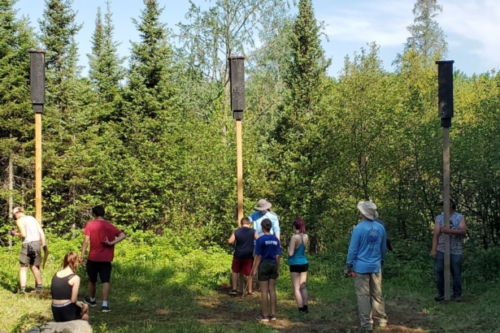
- It may have been a while since your family last built something, but you can make an easy bird or bat house with SFI-certified wood together. Bats and birds have a close relationship with forests, providing insect eating and seed spreading ecosystem services that create healthy habitat for other animals, so consider giving back with a project that supports the birds, bats, and forests nearest you.
- Families with younger children can take learning about the bats, birds, and other animals that call trees home a step further with PLT’s Trees as Habitats family activity (in English and Español). Encourage kids to observe the different stages of tree growth and the relationships between animals that live in a forest. Be sure to check out the full activity (and 49 others!) in Project Learning Tree’s PreK-8 Guide.
- Set up a bird feeder to birdwatch from home. When children take responsibility for a bird feeder it can help educate them about the wildlife in their community and foster an early appreciation for nature. Get tips and ideas for creating your own bird feeders made of recycled and natural materials and learn about why we should be careful with them. If you are going to set up a bird feeder, be aware that collisions with nearby glass windows are very dangerous to birds, causing up to 1 billion bird deaths each year in the U.S. alone. Whether you use tape, paint, or film, research and install a few inexpensive and easy solutions to reduce bird-window collisions near any feeders.
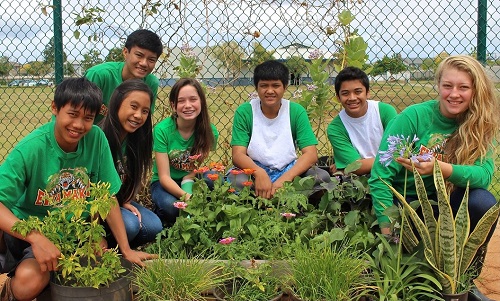
- Start a garden bed this summer! Untreated SFI-certified wood makes an excellent border for your backyard vegetable garden beds and gardening is a terrific way to spend time with kids in nature. Children won’t even know they’re learning while the discover the delights of seeing seedlings sprout and taste things they’ve grown (while learning new skills and building confidence.)
- Perfect for ages 5-12, PLT’s free family activity Have Seeds, Will Travel (in English and Español) encourages kids to observe, collect, and classify plant seeds. Have children examine their seed collection and invent a system for sorting or classifying them. Explain that plants have developed many different methods of seed dispersal to ensure the success of their species. This activity is a simplified version of PLT’s PreK-8 Guide: Activity 43—Have Seeds, Will Travel.
4. Encourage Passion to Become a Profession
Do your children love spending time outdoors? Are they enthusiastic about sustainability and learning and sharing about the environment? Help inspire ages 13+ to follow their dreams and find a green career pathway that matches their personality with PLT’s free trial of the Green Jobs Quiz.
The forest and conservation sector offers many rewarding, diverse jobs—some you may have never known existed!
- You can also encourage a career in sustainability by spotlighting and sharing stories from youth (just like them) who are already working a green job with PLT Canada’s Green Job Youth Spotlights, A Guide to Green Jobs: Voices of Indigenous Professionals, and the A Day in the Life video series.
- For young adults ages 18+, mentorship programs can help determine their goals and consider the many green jobs available. PLT Canada’s Green Mentor program is a chance to network with other professionals to learn more about their experiences starting a green career pathway. The next cohort is starting in October 2022—but you can sign up and read a few first-person stories from program participants today!
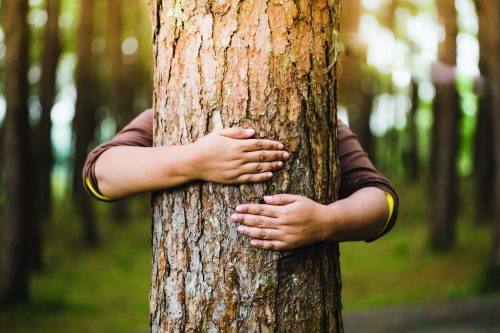 Are you planning to attend the SFI/PLT 2022 Annual Conference in Madison, Wisconsin from June 14–16? The SFI Conference Green Mentor Program is currently recruiting mentors! Anyone attending the conference with over three years of professional experience can sign up (it includes a four-month commitment to meet with mentee 2–3 hours per month virtually and at the conference).
Are you planning to attend the SFI/PLT 2022 Annual Conference in Madison, Wisconsin from June 14–16? The SFI Conference Green Mentor Program is currently recruiting mentors! Anyone attending the conference with over three years of professional experience can sign up (it includes a four-month commitment to meet with mentee 2–3 hours per month virtually and at the conference).
- If the young people in your life already know they’re interested in a forest or forest product-related profession, encourage them to check out the annual Thru The Trees Video Contest. You can also support their interests by exploring the Forest Literacy Framework, tailored to American and Canadian audiences, to learn the forest, tree, and sustainable forest management concepts that everyone should know by the time they’re 18.
Looking for more ideas and resources to support your family learning about forests and encouraging green career pathways?
Be sure to sign up for SFI’s, Project Learning Tree, and PLT Canada’s Newsletters and check out “11 Tips for Parents to Connect Kids to the Outdoors”.


